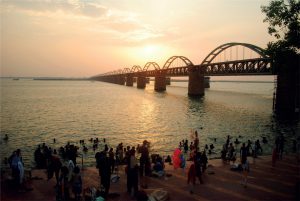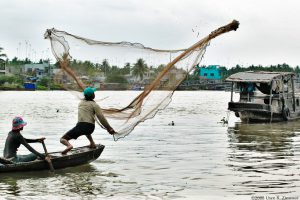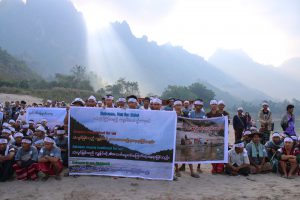Hundreds of thousands of Afghan refugees are starting the long trek back home after the latest donors’ conference to rebuild Afghanistan. As they do so much of the commentary is about conflict and their immediate safety, and while that will dominate concerns, the broken infrastructure they return to is generating concerns for the future.
In early October the Afghan Ministry for Energy and Water, in cooperation with the International Water Management Institute, the UN’s Food and Agriculture Organisation and thethirdpole.net held the country’s first journalists’ workshop on the Indus Basin. Afghanistan has the worst statistics in the region when it comes to sanitation facilities. Only 32% of the population has access to improved sanitation facilities – in India the percentage is 40%, in Nepal it is 46% and in Pakistan it is 64%.
Decades of civil war have taken a savage toll on the infrastructure of the country. According to a study by the German Federal Institute for Geosciences and Natural Resources, 59% of the water in the urban areas of Kabul is contaminated with bacteria, 47% exceeded the safe limit for nitrates set by the World Health Organisation (WHO), and 66% of them exceeded WHO prescribed limits for salinity.
Maybe more important is that during the conflict the infrastructural development has remained stuck where it was in the 1980s, but the Afghan population has expanded tremendously since then. In 1980 the population of Afghanistan was just over 13 million. In 2015 it was over 34 million. During this period the development of water resources, or access to clean water, have remained stagnant. Unsurprisingly Afghanistan is projected to be among the 33 most water scarce countries in the world (in the region, Pakistan is projected to be even more water stressed).
Given the importance of security to Afghanistan’s development, provision of services such as piped water supplies has been neglected. At the same time, people have settled in the big cities seeking jobs and security. Today Kabul is a sprawling metropolis overhung by a perpetual haze thrown up by car and generator smoke, mixed with dust from the dry countryside. People have built houses further and further up the hills that surround the centre of the city, and more than 80% of the population live in unplanned settlements. Many of those that live in such areas have to bring their own water to their homes.
An additional factor in Afghanistan’s water woes is the use of water for agriculture. Approximately 85% of Afghanistan’s water use is for this purpose. Reports indicate that, “From 1999 to 2009, the Helmand Basin region in Afghanistan and Iran intermittently experienced drought conditions that lasted long enough to cause an imbalance in hydrologic processes”. These droughts led to huge displacement from Afghanistan as the people living in the Helmand basin faced the harsh choice between starvation and migration.
Climate change and conflict
To add to these problems, global warming is changing hydrological processes. The Indus basin, shared by China, India, Afghanistan and Pakistan, exists in Afghanistan mostly as the Kabul river basin. It is partially fed by 18,495 glaciers, and those have been receding at an alarming rate. Given the chaos in the country, the effect of this on Afghanistan’s rivers is less well understood than in India and Pakistan as sustained data collection over decades was just not possible.
As refugees return to Afghanistan they will face a brutal choice, either to return to cities which are overstressed, their infrastructure in disrepair, or to the countryside, where years of drought and the changing climate have changed the way the land behaves.
The one factor working in Afghanistan’s favour is that its officials understand how real this challenge is. At the journalists’ workshop, the Afghan Minister of Water and Energy, Ali Ahmad Osmani, said, “To bring Indus basin countries to work together, political efforts are not enough. We need a humanitarian view of the Indus which comes from the media, civil society and scientists who can help not only in decentralising knowledge but also in making people’s voices heard.”
For Afghanistan, the urgency to deal with the situation is even higher given the country’s political instability. Syria’s civil war is now well understood to have been linked to drought induced by climate change which exacerbated tensions in a fragile polity. With Syria’s tragic example before it, Afghanistan cannot afford to take the risks of neglecting its water needs. Other countries interested in its stability should not ignore the peril either.
![<p>Kabul city before the decades of conflict on the left, and now, on the right [image courtesy Naim Eqrar]</p>](https://dialogue.earth/content/uploads/2016/10/Kabul-1990-now-Naim-Eqrar.jpg)








